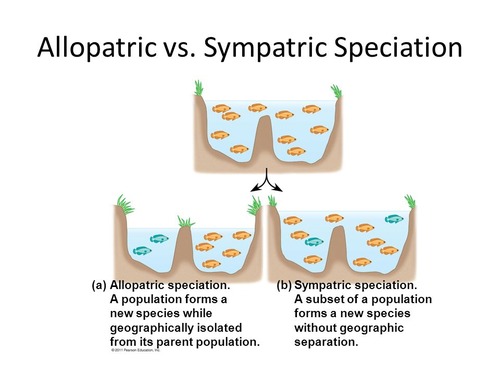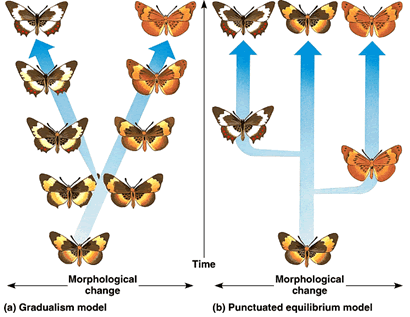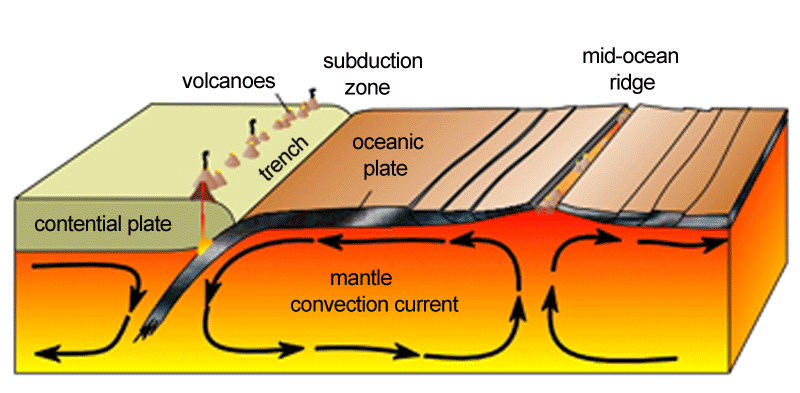AP Bio Evolution 2
Ernst Mayr - 1942
Biological Species Concept - Defines species as a population that can produce fertile and viable offspring in nature
Pre-Zygotic Barriers - Reproductive barriers that occur before syngamy
Temporal Isolation - breeding cycles don’t match
ex) Three species of orchid live in the same rainforest. Each species has flowers that last only one day and must be pollinated on that day to produce seeds.
Mechanical Isolation - breeding is attempted but unsuccessful
ex) Two mammals try to mate, but the pH of the female’ uterus kills off the sperm
Gametic Isolation - fusion between gametes doesn’t occur causing the non-organism to terminate
ex) plants when they produce a lot of pollen in hopes of fertilization
Behavioral Isolation - nonrandom mating
ex) pigeons won’t want to mate with another pigeon that does the mating dance slightly slower
Post-Zygotic Barriers - Reproductive barriers that occur after syngamy
Reduced Hybrid Viability - no viable and fertile offspring produced
ex) offspring is produced but dies before reaching reproductive age
Reduced Hybrid Fertility - offspring is produced but is sterile
ex) Mules are a mix between donkeys and horses, but they can’t interbreed with other mules
Hybrid Breakdown - 1si generation produces fertile and viable offspring, but the next generations are too weak to reproduce
Modes of Speciation
Allopatric Population - some type of barrier that causes the population to split apart and be exposed to different environments
Allopatric Speciation - Because of Allopatric Population, the now 2 populations are reproductively isolated
gene pools differ between the population, extreme clines created, differ from 1 pop to another
pop small → founder effect
Genetic drift occurs until pop1 is large enough. some might be fixed, causing more diversity
Evolution by natural selection may differ between populations
Sympatric Population - same environment but 2 different species that can coexist
Sympatric Speciation - one population that splits into 2 based on behavioral isolation

Cladograms - graphs/charts that can show an inference on common ancestry (shows related characteristics)
Gradualism model - very slow change into 2 populations
Punctuated Equilibrium Model - instant point change into 2 populations
 Evolutionary Development - interdisciplinary science between evolutionary biology and the study of development
Evolutionary Development - interdisciplinary science between evolutionary biology and the study of development
changes in populations, species, or groups of species. More specifically, evolution occurs because populations vary by the frequency of heritable traits that appear from one generation to the next.
gene regulation
Control Rate
timing
Spatial pattern of change in form
Allometric growth
growth rates of different parts
Phylogeny and Systematics
Fossil Formations
Dating - measuring the amount of half-lives that have passed
Radioactive Dating - Uranium-238 is used for inorganic and has a half-life of 4.5 billion years
Carbon Dating - Carbon-14 is used for organic and has a half-life of 5,730 years
Geological Timescale - 3 eras
Combines the ideas of George Cuvier (catastrophism), Charles Lyell (Uniformitarianism), and James Hutton (gradualism)
Precambrian
- Not much is known about this era; it is the oldest era
Paleozoic (ended 250 mya)
- Many supercontinents because of plate tectonics
- Formation of Pangea (at the end) and start of the dinosaurs.
- Great extinction of most marine life as water levels rose
- Land organisms now have an increase in competition as isolation was eliminated
Mesozoic
- Pangea breaks; genetic drift occurs (think the sugar gliders and flying squirrels)
- ends with the asteroid that kills all the dinosaurs and gives rise to mammals
Cenozoic
- Current era where mammals are the predominant species
Plate Tectonics -Theory that explains how major landforms are formed using the Earth’s crust

Allopolyploid vs Autopolyploid
Nondisjunction - the failure of chromosomes to split up during nuclear division
Autopolyploid - difference in chromosome number in offspring of the same species
Results in a tetraploid instead of a diploid chromosome
add parent diploid numbers

Allopolyploid - 2 species produce an organism with a different diploid number than both parents
nondisjunction occurs in 1 parent and doesn’t occur in the other parent
2 fertilizations occur
the offspring is now a different species or a hybrid
mostly occurs in plants
 Mass extinctions
Mass extinctions
Habitat destruction or environmental changes
2 major extinction periods
Permian Period (250 mya) - ended 90% of marine life due to lowered sea levels, and many terrestrial life ended during the start of Pangea
Cretaceous period (65 mya) - destroys 50 % of plants and terrestrial animals (dinosaurs); it also was the start of both global warming and global cooling
Iridium - radioactive and only found on meteorites
found in a layer separating dinosaurs and no dinosaurs in fossils
the dinosaur one was in the present-day Gulf of Mexico
Phylogenetic Tree - a diagram that shows lines for inferred common ancestry with evolutionary and genetic distance
Law of Parsimony - the easiest-to-explain answer is typically correct
Always has 2-point branching
goes from bottom to top
nodes can pivot if they are the last 2 branches
Monophyletic - explains common ancestry for one clade
Shared primitive - homology feature predating a taxon in all species (monophyletic)
Shared derived - something new and unique to a clade or species
Outgroup comparison - must have some connection